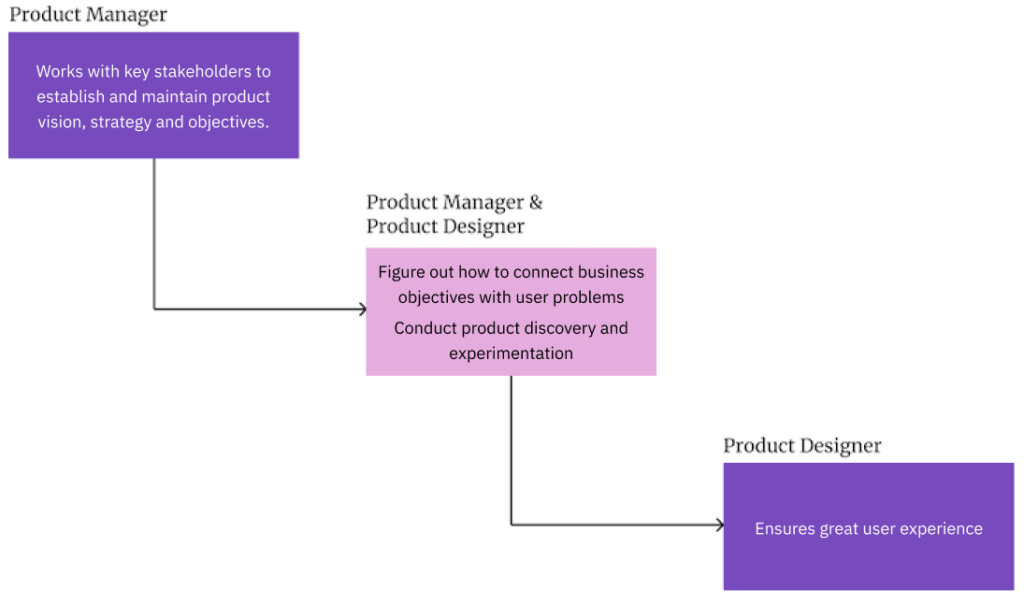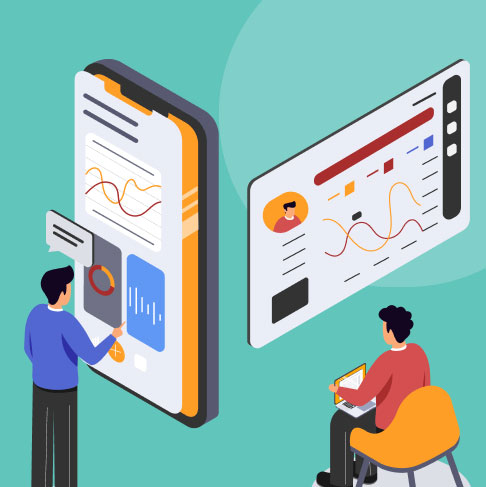Achieving synergy between product design and product management
July 17, 2023 | Read Time : 3 mins
Table of Contents
Introduction
In today’s rapidly evolving business landscape, achieving synergy between product design and product management is crucial for companies seeking to stay competitive and deliver exceptional customer experiences. Product design focuses on creating innovative and user-centric solutions, while product management ensures successful implementation and market adoption. When these two disciplines work seamlessly together, organizations can unlock their full potential, leading to improved products, streamlined processes, and increased customer satisfaction. This blog will explore key strategies and best practices for achieving synergy between product design and product management, enabling companies to drive innovation and succeed in the marketplace.
Understanding the roles: Product Design and Product management
- Definition and objectives: Product design encompasses creating and developing user-centered solutions that address customer needs and pain points.
- User research and empathy: Understanding user behavior, conducting market research, and empathizing with the target audience are essential for effective product design.
- Ideation and prototyping: Generating ideas, creating prototypes, and iterating designs to ensure optimal user experiences.
- Definition and objectives: Product management involves overseeing the entire lifecycle of a product, from inception to launch and beyond.
- Market analysis and strategy: Conducting market research, identifying market opportunities, and developing product strategies to drive growth and profitability.
- Cross-functional collaboration: Collaborating with various teams, including design, engineering, marketing, and sales, to ensure successful product delivery.

Key Strategies
- Regular cross-team meetings: Facilitating open communication and knowledge sharing between product design and product management teams.
- Documenting requirements and feedback: Providing clear guidelines and capturing feedback to align design efforts with product objectives.
- Involving product designers early: Including designers in the creativity and strategy phase to leverage their creative insights and problem-solving skills.
- Collaboration tools and platforms: Utilizing project management and collaboration tools to facilitate seamless collaboration and information sharing.
- User research integration: Ensuring product managers actively involve designers in user research activities to gain valuable insights and validate assumptions.
- Design thinking methodologies: Incorporating design thinking principles in product management processes to foster a human-centered approach.
- Design reviews and iteration: Conduct regular design reviews with product management to gather feedback and iterate on design solutions.
- User testing and validation: Involving product managers in user testing sessions to validate product designs against market demands and user expectations.
Benefits
- Seamlessly integrated design and functionality: Creating products that look visually appealing and provide exceptional user experiences.
- Consistent brand representation: Ensuring product design aligns with the brand’s values, messaging, and identity, strengthening brand loyalty.
- Streamlined decision-making processes: Enabling faster and more effective decision-making by leveraging product design and product management expertise.
- Reduced rework and iterations: Minimizing design changes and rework by involving product management early in the process, resulting in shorter development cycles.
- Meeting customer expectations: Aligning product design and functionality with user needs, preferences, and expectations, leading to higher customer satisfaction.
- Iterative improvements based on feedback: Leveraging continuous feedback loops to make data-driven improvements and enhance customer experiences over time.
Overcoming Challenges
- Aligning design goals with the overall business strategy to ensure a harmonious integration of design and product management efforts.
- Encouraging designers to understand the business context and product managers to appreciate the value of design in achieving business success.
- Prioritizing features and design elements based on user needs, market demands, and technical feasibility.
- Facilitating open discussions and collaborative decision-making to balance design aesthetics, functionality, and resource constraints.
- Fostering a culture of trust, respect, and shared goals between product design and product management teams.
- Encouraging cross-team collaboration through team-building activities, workshops, and joint problem-solving exercises.
Role of Leadership
- Ensuring top-level support for integrating product design and product management efforts.
- Aligning the objectives and incentives of both teams to drive synergy and collaboration.
- Creating cross-functional teams or committees that include representatives from design, product management, engineering, and other relevant departments.
- Providing a platform for regular communication, decision-making, and conflict resolution.
Leveraging data and analytics for informed decision-making
- Leveraging user analytics, feedback, and market research to inform design and product management decisions.
- Using quantitative and qualitative data to validate design choices and drive product improvements.
- Establishing key performance indicators (KPIs) to measure the impact of design decisions on product success.
- Monitoring user engagement, conversion rates, and customer satisfaction to evaluate design and product performance.
Cultivating a culture of continuous learning and improvement
- Encouraging a feedback-driven culture where design and product management teams actively seek and value user feedback.
- Incorporating user feedback into product iterations and updates to enhance user experiences.
- Adopting agile methodologies such as Scrum or Kanban to enable iterative development and frequent collaboration between design and product management.
- Conducting retrospectives and post-mortem analyses to identify areas for improvement and drive continuous learning.
Evolving trends and technologies in product design and management
- Emphasizing the importance of understanding user needs, preferences, and behaviors throughout the product development lifecycle.
- Integrating user research, usability testing, and iterative design methodologies to create intuitive and delightful user experiences.
- Embracing agile principles and frameworks to enable flexibility, adaptability, and rapid product development iteration.
- Facilitating close collaboration between product managers, designers, and development teams to deliver value to customers quickly and effectively.
The future of synergy: AI and automation
- Leveraging artificial intelligence and machine learning to automate repetitive design tasks, generate design recommendations, and improve design efficiency.
- Enabling designers to focus more on strategic and creative aspects while AI tools handle mundane and time-consuming design activities.
- Harnessing AI-powered analytics, predictive modeling, and automation to enhance product management processes.
- Enabling data-driven decision-making, market trend analysis, and demand forecasting for optimized product strategy and roadmap planning.






